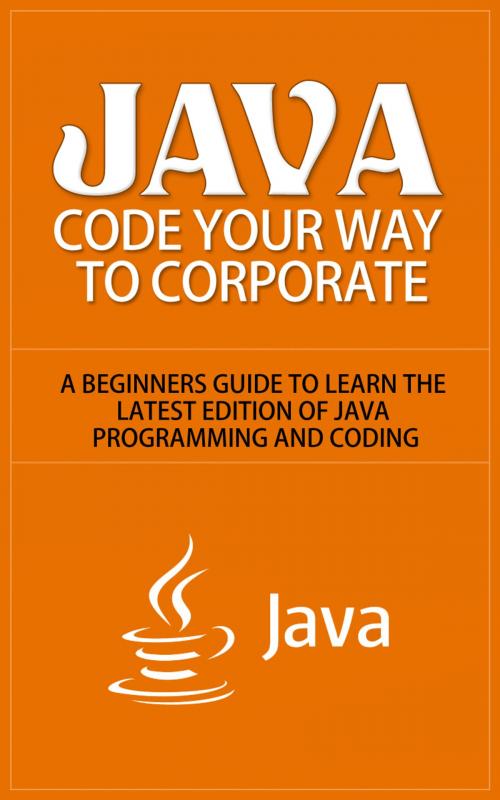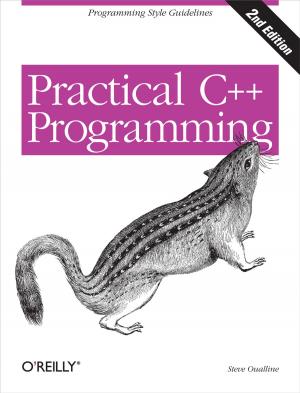Java
Code Your Way to Corporate - A Beginners Guide to Learn the Latest Edition of Java Programming and Coding
Nonfiction, Computers, Internet, Web Development, Java, Programming, Programming Languages| Author: | Anton Romanov | ISBN: | 1230002094076 |
| Publisher: | Anton Romanov | Publication: | January 15, 2018 |
| Imprint: | Language: | English |
| Author: | Anton Romanov |
| ISBN: | 1230002094076 |
| Publisher: | Anton Romanov |
| Publication: | January 15, 2018 |
| Imprint: | |
| Language: | English |
There is no doubt about the importance of technology in our society. Its presence is felt in every line of work: communications, medicine, agriculture, journalism, and even the banking business. The conclusion is obvious: Technology is here to stay. Therefore, this phenomenon has established the need for us to develop new skills to adapt to the demand of technology in every area of our lives. And, as many consider, the language of programming may be the most important ability of our century. Called “the language of the future”, programming is becoming more important as it is changing the daily life in society. This “revolution” is intrinsically connected with the rising of Java as the most powerful tool in the art of programming.
After being officially launched as “Java” in the mid-90’s (1995), it has been catapulted to the forefront of programming. Java is everywhere: datacenters, desktops, cell-phones, and scientific computers. So, it is clear that Java has changed the landscape of programming language all over the world during the last two decades.
Unquestionably, Java has brought several improvements, changes, and innovations that changed computer language’s paradigm. We could easily mention some, such as the creation of the Java Applet, which has not only increased innovation related to internet programming, but also has expanded the universe of objects that can move freely in cyberspace. We could also say the ability of downloading applets safely is probably one of the biggest assets of Java.
But maybe it wouldn’t be enough. Why is Java so successful, and what aspects make it so important to be learned? Well, that’s something easy to answer, as Java has revolutionized the programming language in the whole world.
Java is an object oriented language, where everything is an Object. Unlike other programming languages, such as C and C++, Java is compiled into a platform independent byte code distributed over the web. Compared with C or C++, it is considered more dynamic, as it adapts to an evolving environment and carries an extensive amount of run-time information, which can be mainly applied to verify and resolve access to objects on run-time.
Easy to learn, Java is also a trademark in what concerns security and computer protection, not allowing viruses to access private information, like passwords or credit card numbers. Java is portable, a quality that enables it to work on every computer system, without depending on any aspects related to its specifications. With a huge effect on the Internet since its development, Java is designed for the distributed environment of the internet, enabling high performance and writing programs that can do many tasks at the same time. Finally, Java’s byte code is translated to native machine instructions, which is one more reason to acknowledge Java’s strong contribution to simplify the art of web programming.
With all that being said, this manual aims to help you become familiar with Java programming, its key concepts, and every needed specification concerned with one of the most important activities in the world today. You will learn the major steps of programming in Java: We will start with java’s basic syntax and operators, dedicating chapters to analyze working with objects, classes; identifying the different variables, databases, and modifiers you should know. In the last chapter, we will also approach Java’s loop control to give you a complete view of the most important contents related to Java.
Our goal is to help you take advantage of the full potential of this tool and, if you’re taking your first steps in programming, we hope to contribute to the increase of your productivity and knowledge.
But for now, it’s time for us to open the doors of knowledge for you!
We hope you enjoy it!
There is no doubt about the importance of technology in our society. Its presence is felt in every line of work: communications, medicine, agriculture, journalism, and even the banking business. The conclusion is obvious: Technology is here to stay. Therefore, this phenomenon has established the need for us to develop new skills to adapt to the demand of technology in every area of our lives. And, as many consider, the language of programming may be the most important ability of our century. Called “the language of the future”, programming is becoming more important as it is changing the daily life in society. This “revolution” is intrinsically connected with the rising of Java as the most powerful tool in the art of programming.
After being officially launched as “Java” in the mid-90’s (1995), it has been catapulted to the forefront of programming. Java is everywhere: datacenters, desktops, cell-phones, and scientific computers. So, it is clear that Java has changed the landscape of programming language all over the world during the last two decades.
Unquestionably, Java has brought several improvements, changes, and innovations that changed computer language’s paradigm. We could easily mention some, such as the creation of the Java Applet, which has not only increased innovation related to internet programming, but also has expanded the universe of objects that can move freely in cyberspace. We could also say the ability of downloading applets safely is probably one of the biggest assets of Java.
But maybe it wouldn’t be enough. Why is Java so successful, and what aspects make it so important to be learned? Well, that’s something easy to answer, as Java has revolutionized the programming language in the whole world.
Java is an object oriented language, where everything is an Object. Unlike other programming languages, such as C and C++, Java is compiled into a platform independent byte code distributed over the web. Compared with C or C++, it is considered more dynamic, as it adapts to an evolving environment and carries an extensive amount of run-time information, which can be mainly applied to verify and resolve access to objects on run-time.
Easy to learn, Java is also a trademark in what concerns security and computer protection, not allowing viruses to access private information, like passwords or credit card numbers. Java is portable, a quality that enables it to work on every computer system, without depending on any aspects related to its specifications. With a huge effect on the Internet since its development, Java is designed for the distributed environment of the internet, enabling high performance and writing programs that can do many tasks at the same time. Finally, Java’s byte code is translated to native machine instructions, which is one more reason to acknowledge Java’s strong contribution to simplify the art of web programming.
With all that being said, this manual aims to help you become familiar with Java programming, its key concepts, and every needed specification concerned with one of the most important activities in the world today. You will learn the major steps of programming in Java: We will start with java’s basic syntax and operators, dedicating chapters to analyze working with objects, classes; identifying the different variables, databases, and modifiers you should know. In the last chapter, we will also approach Java’s loop control to give you a complete view of the most important contents related to Java.
Our goal is to help you take advantage of the full potential of this tool and, if you’re taking your first steps in programming, we hope to contribute to the increase of your productivity and knowledge.
But for now, it’s time for us to open the doors of knowledge for you!
We hope you enjoy it!















